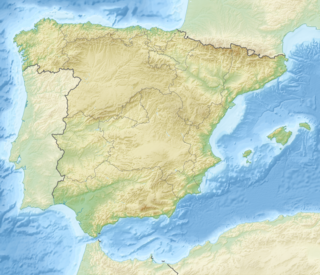
Tumbes is a coastal region in northwestern Peru and southwestern Ecuador. Due to the region's location near the Equator it has a warm climate, with beaches that are considered among the finest in Peru. Despite its small area, the region contains a wide variety of ecosystems.

Manú National Park is a national park and biosphere reserve located in the regions of Madre de Dios and Cusco in Peru. It protects diverse ecosystems such as lowland rainforests, cloud forests and Andean grasslands. The Manú Nature Reserve was established in 1968.

Huascarán National Park is a Peruvian national park that comprises most of the mountain range known as Cordillera Blanca which is part of the central Andes, in the region of Ancash. The park covers an area of 340,000 ha and is managed by the Peruvian Network of Protected Natural Areas: SERNANP. It was designated as a World Heritage Site in 1985 by UNESCO, is also a well-known mountaineering spot and harbors a unique biodiversity with plant species such as the Queen of the Andes, trees of the genera Polylepis and Buddleja, and animals such as spectacled bears, condors, vicunas and tarucas.

The Maya Biosphere Reserve is a nature reserve in Guatemala managed by Guatemala's National Council of Protected Areas (CONAP). The Maya Biosphere Reserve covers an area of 21,602 km2.

Manglares de Tumbes National Sanctuary is a protected natural area located in the region of Tumbes, Peru. Established in 1988, it protects the largest area of mangrove forest in Peru.

Tabaconas-Namballe National Sanctuary is a national sanctuary in Peru established in 1988, and protects the southernmost part of the páramo ecosystem. It is located in San Ignacio Province, Cajamarca and spans an area of 32,124.87 ha.

Cordillera Azul National Park is a protected area in Peru. It protects part of the Ucayali moist forests ecoregion.

Pagaibamba Protection Forest is a protected natural area in the region of Cajamarca, Peru. The area was declared a protection forest in order to preserve the water supply of surrounding towns, preserve the water cycle of the area, protect road infrastructure and protection of soils by preventing erosion.

The Alto Mayo Protection Forest is an area of protected forest land in northern Peru. It is located in Rioja and Moyobamba provinces within the region of San Martin, with a small part in Rodriguez de Mendoza province, in the region of Amazonas. This area preserves a portion of the tropical yungas forest in the upper Mayo River basin, while protecting soil and water from erosion by deforestation, as the area is the water supply of populations in the Mayo valley.

El Angolo is a game reserve in northern Peru. It is considered part of the Noroeste Biosphere Reserve, which includes Cerros de Amotape National Park and Tumbes National Reserve, as declared by UNESCO in 1977.

Laquipampa Wildlife Refuge is a protected area in the region of Lambayeque, Peru. It protects tropical dry forests, habitat of the white-winged guan and the spectacled bear.

Pantanos de Villa Wildlife Refuge is a protected area of marshes located in the district of Chorrillos, within the city of Lima, Peru with an extension of 263.27 hectares (2.63 km2).

Letea Forest is the oldest natural reservation in Romania. It was established in 1938, when the Romanian Council of Ministers passed Decision No. 645 declaring the forest a nature reserve. It is located between the Sulina and Chilia branches of Danube in the Danube Delta. It covers an area of approximately 2,825 ha.

Cordillera de Colán National Sanctuary is a protected area in Peru located in the Amazonas Region, in the Bagua and Utcubamba provinces.
Under UNESCO’s Man and the Biosphere Programme, there are 125 biosphere reserves recognized as part of the World Network of Biosphere Reserves in Latin America and the Caribbean. These are distributed across 21 countries in the region.

The Muniellos Nature Reserve is a protected area of woodland in Asturias, Spain. The area of the nature reserve is 5,488 ha. The main species of tree is oak: it has been described as probably the best preserved Quercus robur forest in Spain.

The Ecuadorian dry forests (NT0214) is an ecoregion near the Pacific coast of the Ecuador. The habitat has been occupied by people for centuries and has been severely damaged by deforestation, overgrazing and hillside erosion due to unsustainable agriculture. Only 1% of the original forest remains. The patches of forest, mostly secondary growth, are fragmented. They are home to many endemic species at risk of extinction.

The Tumbes-Piura dry forests (NT0232) is an arid tropical ecoregion along the Pacific coasts of southern Ecuador and northern Peru. The ecoregion contains many endemic species of flora and birds adapted to the short wet season followed by a long dry season. Threats include extraction of wood for fuel or furniture, and capture of wild birds for sale.













